Working Out Loud
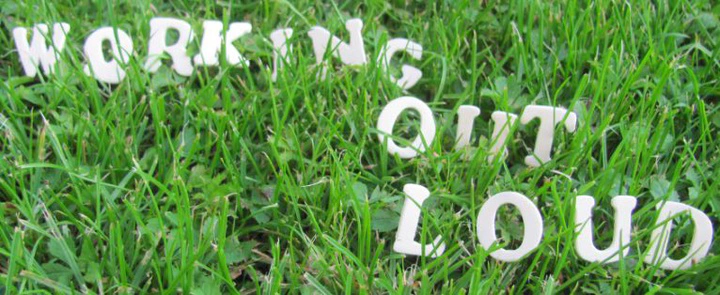
This is the fifth post in a series on the core concepts underpinning the WayFinders Network & WayFinder Platform. These core concepts are…
-
WayFinder Philosophy (link)
-
Networks (link)
-
Action Learning (link)
-
Stories (link)
-
“Working Out Loud” (this post)
As I see it, Working Out Loud (WOL) is a relatively straightforward concept and method…yet can be challenging to execute on a regular basis.
To dive straight in, here is some of my own recent WOL…
“Jill, who had been engaged by the club to work with coaches and parents, had audio recorded a couple of the u/10’s coaches in a training session and had grabbed each of them individually to listen to it. Both coaches reacted defensively to the sounds of them continually barking instructions at the kids (and at one stage using sarcasm in a condescending way). The coaches insisted that you HAVE to coach this way.
I’ve been acting as a mentor and critical friend for Jill and for the last couple of weeks she had been wrestling with the best way to share the audio recording and have a conversation with these two coaches. Reflecting on what had played out, we discussed their defensive reaction being a perfectly understandable response in the moment. We then discussed that, with time, the coaches might get a quiet moment to reflect further and this could lead to them seeking out Jill for another conversation. If this doesn’t happen we looked at what Jill’s next move might be.
Having been involved for some time now, I asked Jill what her sense was of the clubs commitment to creating a more positive environment for their young players - were they saying the right things but perhaps unaware of the changes required to bring this to life?”
That snippet of WOL also triggered an immediate reflection on my own practice…
“one suggestion I could have thrown in the mix was for Jill, if/when she next records coaches, to send the audio recording to the coaches and enable them to listen to it on their own first, and then have a conversation with her about it. This is something I have done previously, especially when coaches are seeing/hearing themselves coach for the first time.
BTW, as I’m typing this I’ve suddenly recalled a conversation in Loughborough about 5 years ago with a group of coach developers talking about this very topic!”
Definitions
One way of defining WOL is when people…
…are encouraged to talk about their work and publish what they do. The goal is to allow others to communicate with them, respond to their work and learn from them, so that they can subsequently apply this knowledge to their own work. Working Out Loud is a way to build new relationships that can be valuable in many different ways, such as achieving a new goal, developing a new skill, or exploring a new topic. (link)
The linked article makes mention of Bryce Williams first introducing WOL in 2010 as:
[working out loud = observable work + narrating your work]
The definition quoted above was referring to WOL from an employee/workplace perspective, but applying this “boundary” can be limiting. I first came across the term “working out loud” when reading this 2014 post by Harold Jarche where he shared the following thoughts…
While there is some current impetus behind working out loud at work, the concept falls apart if it does not connect outside the workplace. If not, WoL is just an echo chamber. When there is no place to test ideas in a trusted space, how can an individual’s ideas translate into new ways of doing things? We need others to help us. We have to test ideas together, but not under the constraints of deadline-driven projects. Helping make space, such as communities of practice, is an essential first step in enabling working out loud, and most importantly, reaping its benefits.
- Harold Jarche
(if you have not come across Harold, I strongly encourage you to spend some time on his blog and benefit from his wisdom)
Hopefully it is clear how these WOL definitions are coherent with the previous two posts on Action Learning (“act to learn & learn to act”) and Stories (“new connections, new capacities & new chronicles”).
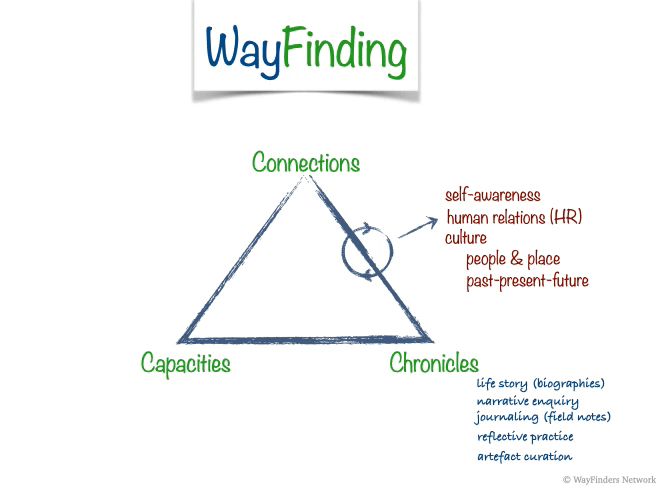
Visualising & Connecting Dots
If your dots are not visible, then it’s impossible to connect them
- Brian Tullis
If I were to publish & share my opening two snippets on the WayFinder Platform I would be following the method of “Working Out Loud” and creating the potential for further insights to emerge. To provide an example, the below demonstrates how these dots and connections emerged and dynamically evolved through 4 people WOL for a month on the WayFinder Platform…

(each “dot” above represents a WOL snippet that was shared on the platform and the visible links between them were created as people read these snippets and “made a connection”. As you can see, some “dots” are not connected)
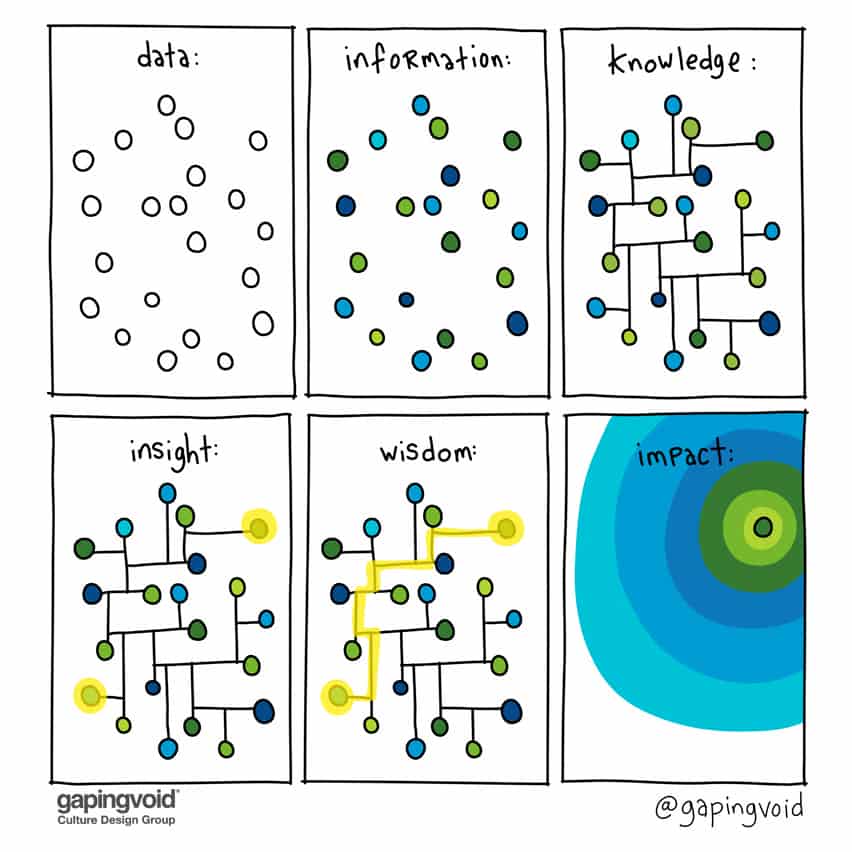
Trust
Harold Jarche’s quote mentioned “trusted space”. I see this as vital and why I mentioned in the previous post that it is so important to grow relational quality. It is no coincidence that RELATIONSHIPS and GENEROSITY are amongst the key elements of WOL sketched below…
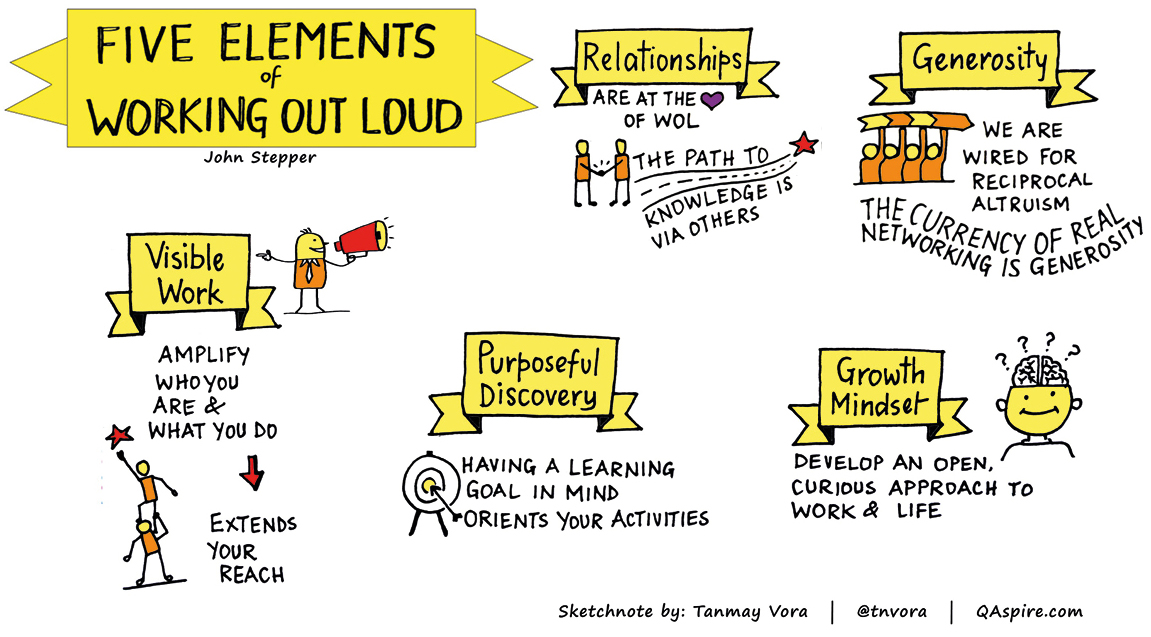
Whilst tools and platforms cannot manufacture this relational quality for you, they can influence the nature of the interactions and that is something I have thought a lot about in designing the WayFinder Platform. Twitter recently notified me that I have been using their platform for 12 years, yet in recent times I have watched in dismay as it has triggered the worst in people and drifted far away from a “trusted space” high in relational quality.
(perhaps in future posts it would be worth touching on hosting/stewarding/facilitating these “trusted spaces”?)
Challenges
I mentioned in the opening that WOL can be quite difficult to master, and perhaps especially so the more “public” it becomes. A number of years ago when myfastestmile was first formed we were keen on the idea of WOL with our project partners. However we have yet to do this very well, even internally within the project teams, and my public WOL efforts have often been tilted to “thinking out loud”, somewhat lacking in specific accounts of the work we were doing.
Here are a few things that first came to mind when reflecting on why WOL can be difficult…
-
betraying trust of others who you are working with and/or have shared things with you
-
courage and safety required to provide authentic accounts of how people are wielding their formal power and politics (this is very common when the work threatens to change deeply embedded practices)
-
authentic WOL involves sharing failures/mis-steps, which risks being perceived as incompetence (related to this, I find social media platforms are often incoherent with authentic WOL as they encourage portrayal of expertise and authority, which has a place but frequently brings with it excessive ego and hubris)
-
hoarding knowledge based on the belief it will deliver “competitive advantage”
-
the “digital divide” - when peoples roles are largely digital, ie web developers, then it can be relatively seamless to WOL as they do not have to leave this digital environment. However senior organisational leaders and many “human to human” roles are not like this, and so there is a divide between doing their role and then engaging with digital tools to WOL.
(On this last point, note that Helen Sanderson, when contemplating the future of WOL in this presentation, believes CEO’s and organisational leaders will quickly jump on board. I’m a little more reserved about this, as I see frequent attempts to “control the narrative” to protect the reputation of organisations and this could lead to inauthentic WOL.)
One of the challenges you may have expected to see is “time”, as in “I just won’t have time to do this!”. I actually don’t see this as such a significant challenge, as the time required to WOL can be minimal. Developing a routine and a little bit of discipline to stick with it when first getting started really helps. Our StoryKeeper app is designed to make it as simple as possible to quickly capture stories and reflections (“field notes”) from your work/practice in a variety of ways (text, image, audio, video, free hand sketch), and seamlessly sync to the WayFinder Platform…
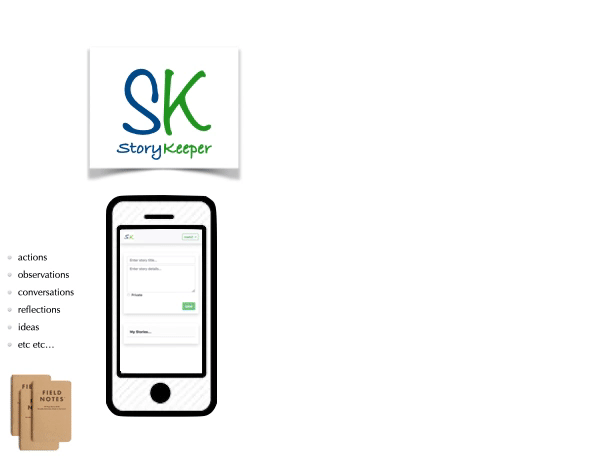
To finish this series I’m going to record a short video demonstrating how the 5 core concepts - WayFinding, Networks, Action Learning, Stories & Working Out Loud - are enabled and integrated through the WayFinder Platform and StoryKeeper app. I hope to get this done by the end of the week! 🤞
Image Credit: Azedelmaier, CC BY-SA 4.0, via Wikimedia Commons